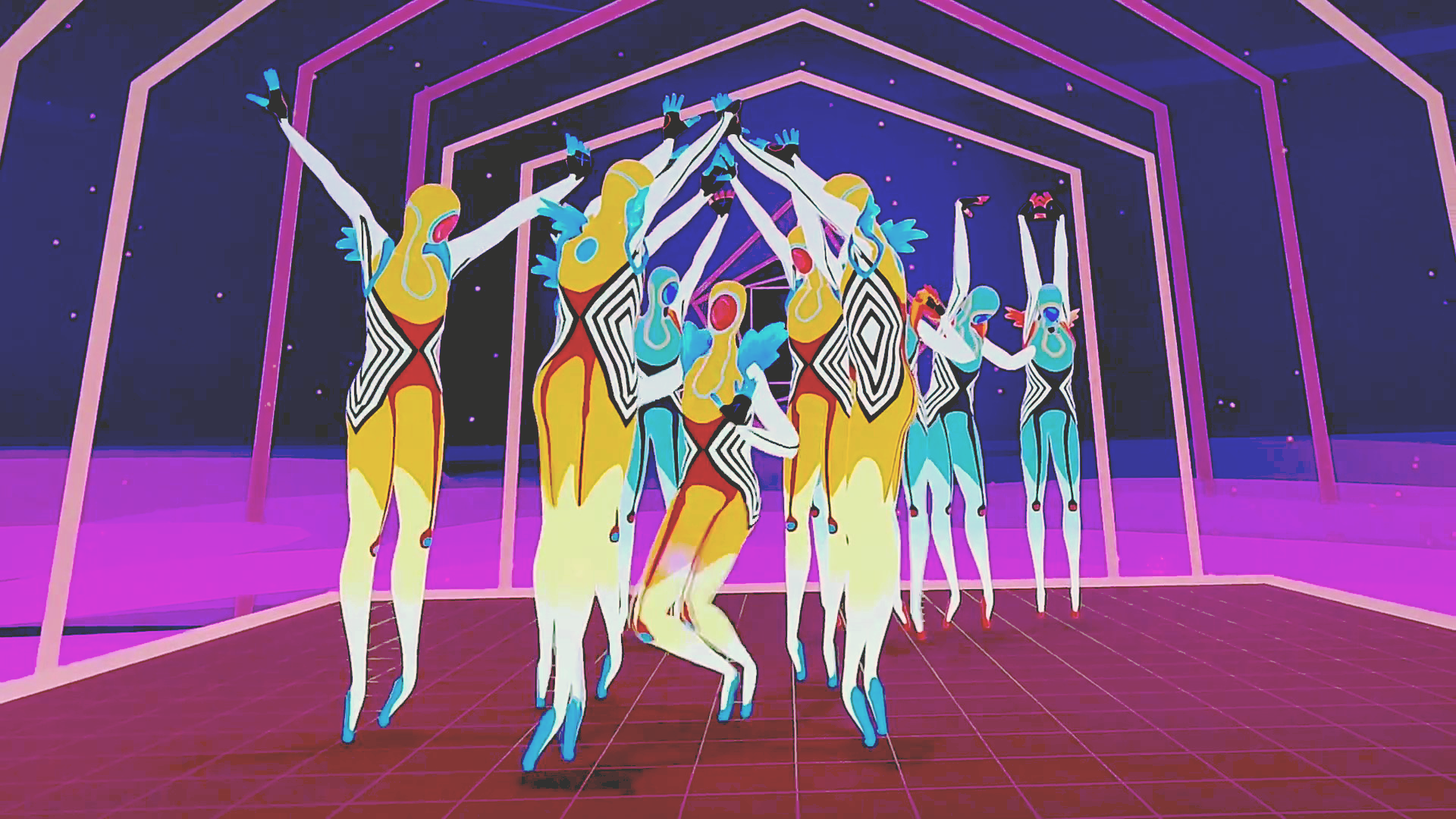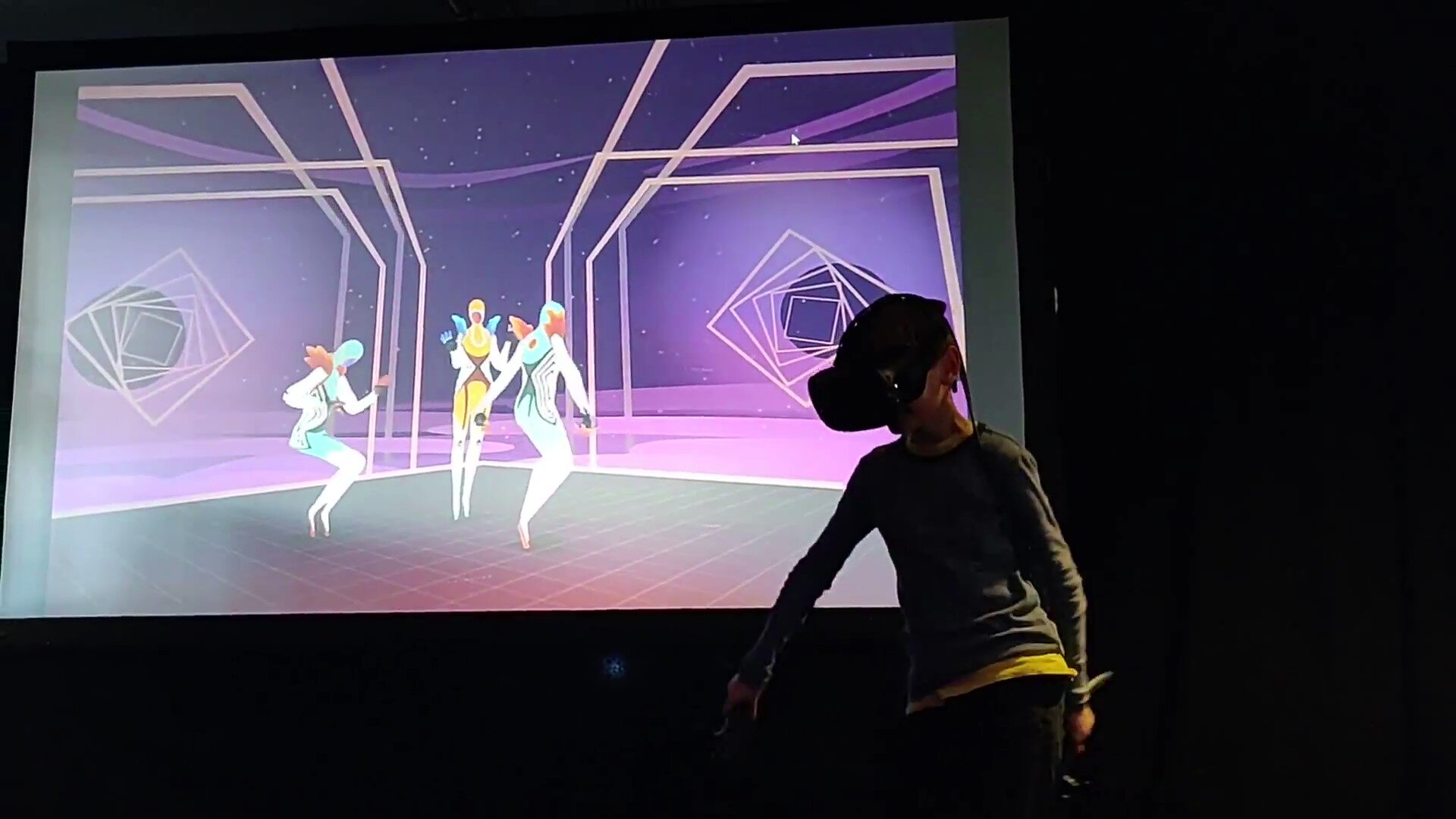In this series of blog posts, we will take you through the creative process behind Kinesics. This artistic research project explores the future role of body language in Virtual Reality. This is the last post of a series of 10.
As explained in our former blog post, we were working on our last prototype to bring the research project ‘Kinesics’ to an end. Together with KABOOM Animation Festival we worked on the game Copy Paste Dance and was premiered at the first edition of the festival.
Copy Paste Dance
We made a performative multiplayer space where you can play and enjoy the freedom of your own movement. In this online multiplayer space you and another player have the power to ‘copy and paste’ your own movements, creating life-size puppets that repeat your recorded movement - a moving, three dimensional, lifesize snapshot of embodied time.
Move, dance, multiply yourself, create choreographies together, act out improvisational theatre scenes, or simply enjoy each other’s physical closeness and movement in a time where real physical closeness is difficult or even impossible. The core mechanic of this work is the magical feeling of stepping out of yourself to marvel at your own movement. As well as, the emergent play qualities of pure playful performance, that happen when two players are given these tools.
Players can pick up the copy or move scale, then turn and place it anywhere they want. Together, they can create an ensemble of copies - it is up to the players to decide what they create. A third camera continuously circles the stage, and shows these 'onstage performances' to the outside world, at festivals, or on twitch streams for example.
Lessons learnt
People liked playing with the open ended possibilities. One activity that emerged, was to find the real player between all the copies. Kids especially loved to challenge their parents in ‘finding the real me’. Teens enjoyed dancing with each other, even without making any copies. Others, further explored the physical closeness, as getting close to both the other players and your own puppets proved fascinating and even intimate for some players. We saw people use the puppets as props for their own performance or to recreate a scene between characters.
Lessons learnt
People were sometimes startled by their own copy. The basic setup creates the copy at the exact position as your own avatar, meaning that your puppet materialises where you stand resulting in an overlap of bodies. Taking a step back after creating a puppet felt satisfying for most, confusing for some, and like an out of body experience for one of the participants. In a future version we would add a clear visualisation for the copy action, like letting the puppet materialise a metre in front of you.
Lessons learnt
Creating emergent play or performative spaces stimulates players to play with their virtual body in an intuitive and fun way. We realised that this is exactly Monobanda’s specialty: reward the act of doing instead of only rewarding success. As a result, we got rid of all the game rules and designed an open space to experiment with the human body and self expression. So, instead of forcing a specific player’s behaviour by rules, we gave players the opportunity to experiment. We learnt that it is important to put trust into the players and their own inventiveness. Instead of forcing them to do what you want them to do, we should create situations that fluently reward a multitude and variety of actions.
Decisions made
Being such an open ended application, we feel that we have only scratched the surface of the possibilities that Copy Paste Dance hints at. Both Monobanda and ImproVive are inspired to explore new forms of expression, and are already working on expanding them.
Concept art
By Sonja Vuure
This was the last post about our artistic research into the possibilities of body language in virtual reality, a collaboration with ImproVive and funded by Creative Industries NL. However, we have one extra post, a guest post by Lisane Renalda, a student of the Masters programme Arts and Society, in which she talks about the philosophy behind body language in virtual reality.












